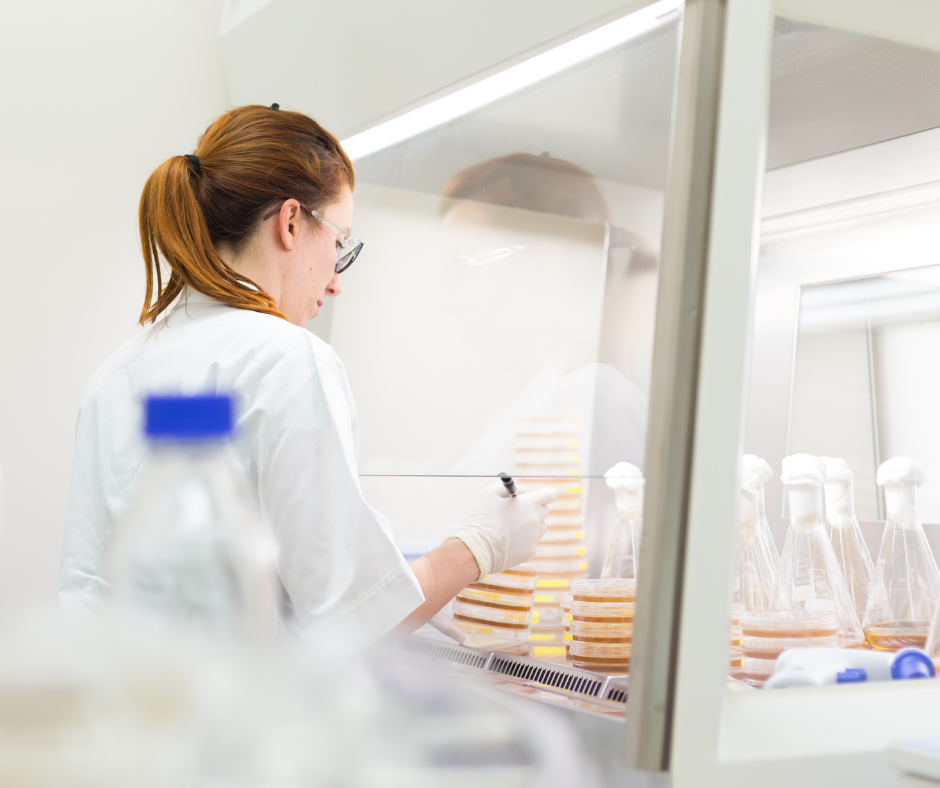Working in a laboratory requires being aware of which type of equipment is required to keep the environment safe while working with hazardous materials. If your lab is at risk of particulate contamination of materials, a laminar flow hood, also known as a clean bench or LFH, may be necessary.
While laminar flow hoods are similar to fume hoods and biological safety cabinets, it is extremely important to note that they have separate functions. Before making an investment, you’ll want to be aware of which piece of equipment is the right choice for your lab.

Fume Hoods and Biological Safety Cabinets
The primary purpose of a chemical fume hood is to protect the user by limiting exposure to hazardous or toxic fumes and vapors. A fume hood continuously moves contaminated air away from the operator and pushes it outside through the exhaust system of the building. A fume hood is large, durable, and filters the air to prevent the inhalation of toxic particles that can lodge in the lungs and cause serious health implications, however, a fume hood does not protect against solid particles.
A biological safety cabinet, also referred to as a biosafety cabinet, removes solid particles from the air by using high-efficiency particulate air (HEPA) filters. The clean, particle-free air is then recirculated back into the laboratory. A biosafety cabinet is designed to protect the user, the environment, as well as the substance that is being handled, however, a biosafety cabinet cannot stop harmful vapors from being recirculated as a fume hood does. Biosafety cabinets actually disperse gasses back into the laboratory.
Related: Fume Hoods And Biosafety Equipment: What’s The Difference?
Laminar Flow Hoods
Laminar flow hoods do not provide a strong level of protection to laboratory personnel. While an LFH does have a thin layer of glass between the user and the materials, the primary function of an LFH is to furnish a sterile environment to protect the material within the hood. Due to the direction of airflow, the material is protected from the operator but contaminated air may be blown towards the user. This means that the operator is not fully protected. Because of this, flow hoods should never be used while working with toxins or volatile chemicals.
LFHs have two airflow patterns: Vertical and horizontal. This refers to the direction the air is moving.
Vertical Flow Hood
- Airflow Direction: Air flows vertically from the top of the hood directly down to the work surface.
- Best For: Tasks requiring sterile conditions directly above samples (often used in microbiology, tissue culture work, and pharmaceutical prep).
Horizontal Flow Hood
- Airflow Direction: Air flows horizontally from the back of the hood toward the front.
- Best For: Applications where equipment or samples should not be directly in the path of airflow (ideal for electronics assembly, and non-hazardous material handling).
Regardless of airflow direction, three kinds of laminar flow hoods have been developed to meet various research and clinical needs:
1. Class I laminar flow hoods: The air flows from the laboratory into the chamber in a similar design to chemical fume hoods.
2. Class II laminar flow hoods are designed for work involving BSL-1, 2, and 3 materials. The air flows from the laboratory into the chamber while also flowing downward toward the working surface. The exhaust air is sent through a HEPA filter before being released into the environment.
3. Class III laminar flow hoods are gas-tight and provide the highest level of protection. Air that enters or exits the chamber is passed through a HEPA filter.
Choosing the Right Equipment
When selecting an enclosure for your laboratory, you will need to determine what you are aiming to protect and what type of substance you are trying to protect it from.
- Fume hoods are designed to protect lab personnel from volatile vapors and fumes.
- Biosafety cabinets protect the user, the sample, and the environment from harmful particles, but typically do not offer protection from volatile vapors and fumes.
- Laminar flow hoods offer contamination protection to the material within the hood but only offer limited protection to lab personnel.
Whether you’re building a new lab or upgrading your existing one, you’ll find a remarkable selection of casework, workstations, fume hoods, and related lab products at National Laboratory Sales. If you have questions or need assistance in choosing the right product for your laboratory, please don’t hesitate to contact us.
Related Resources

